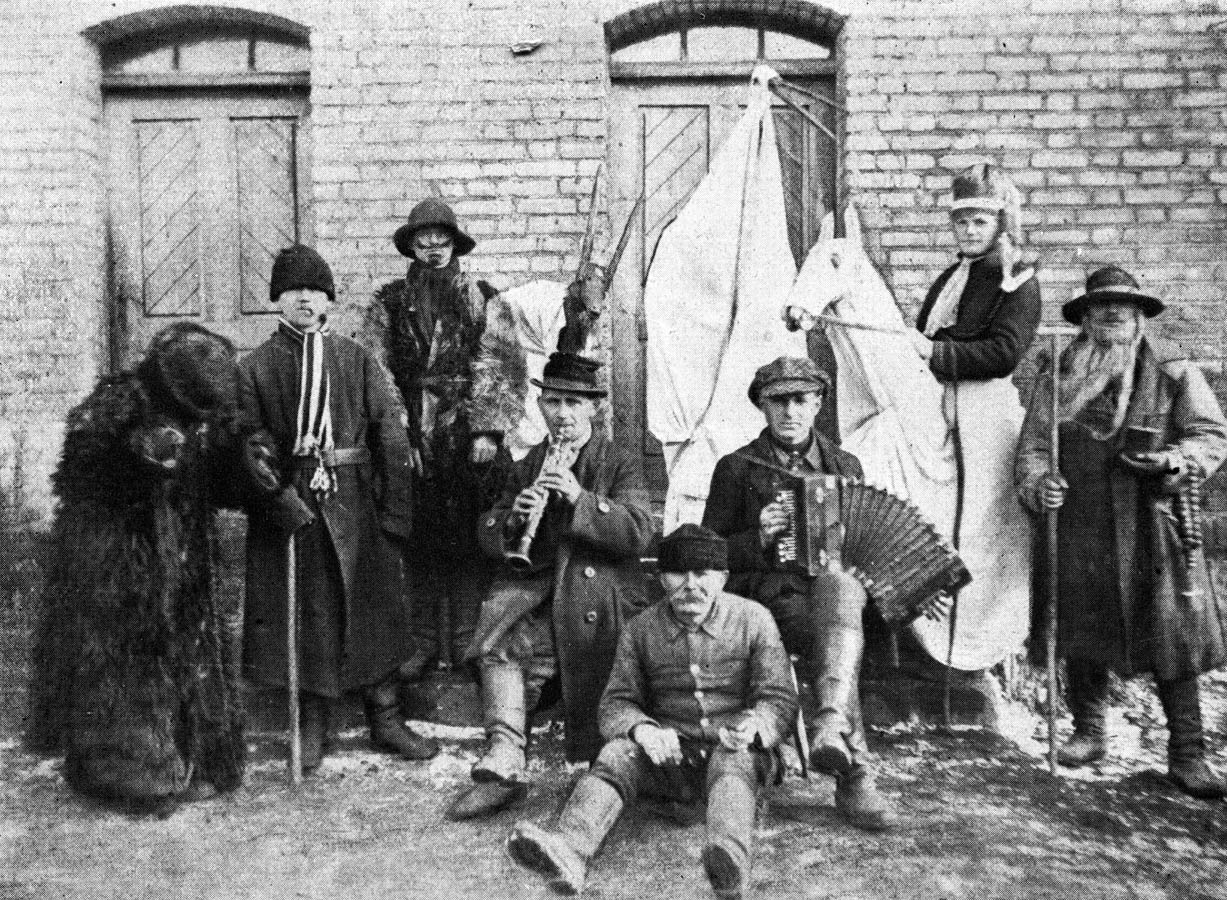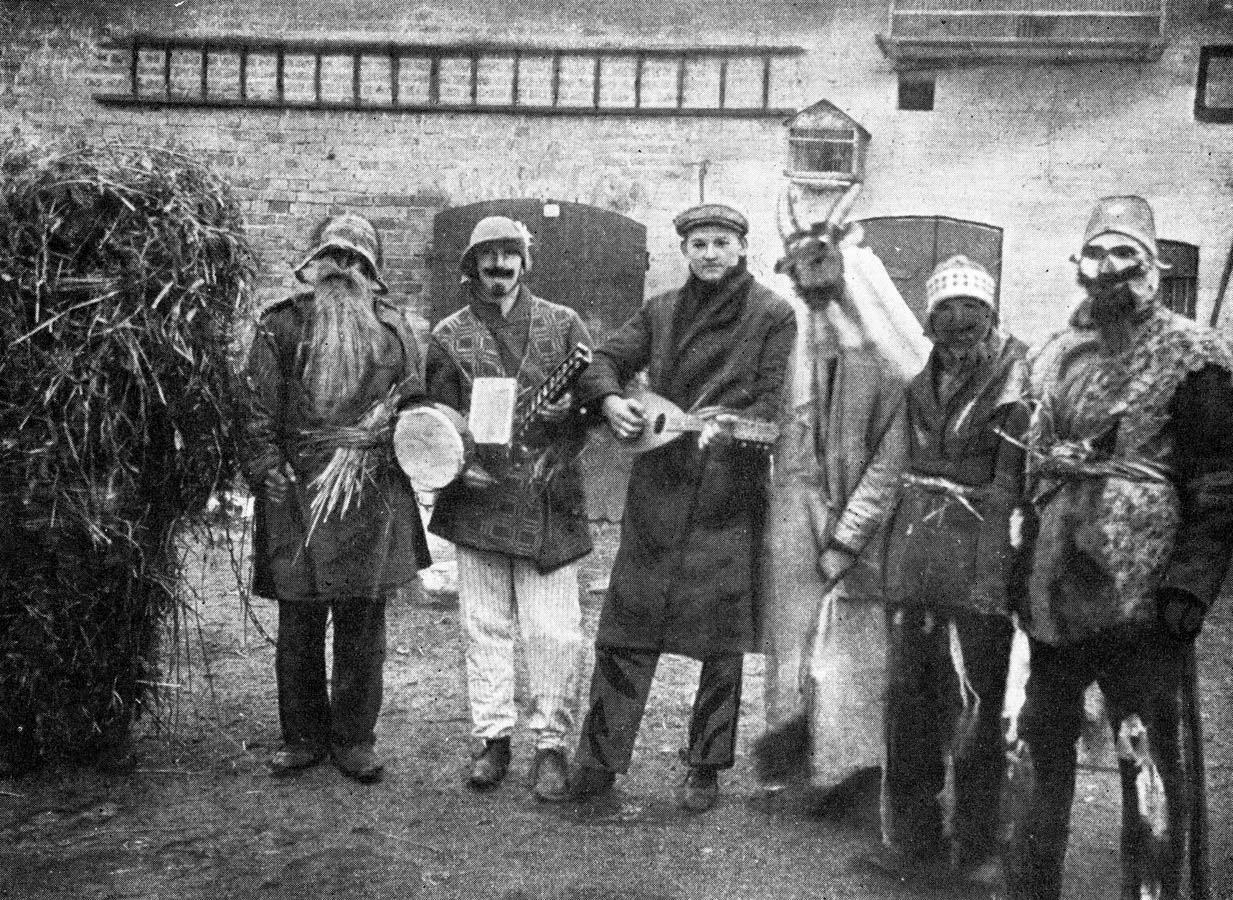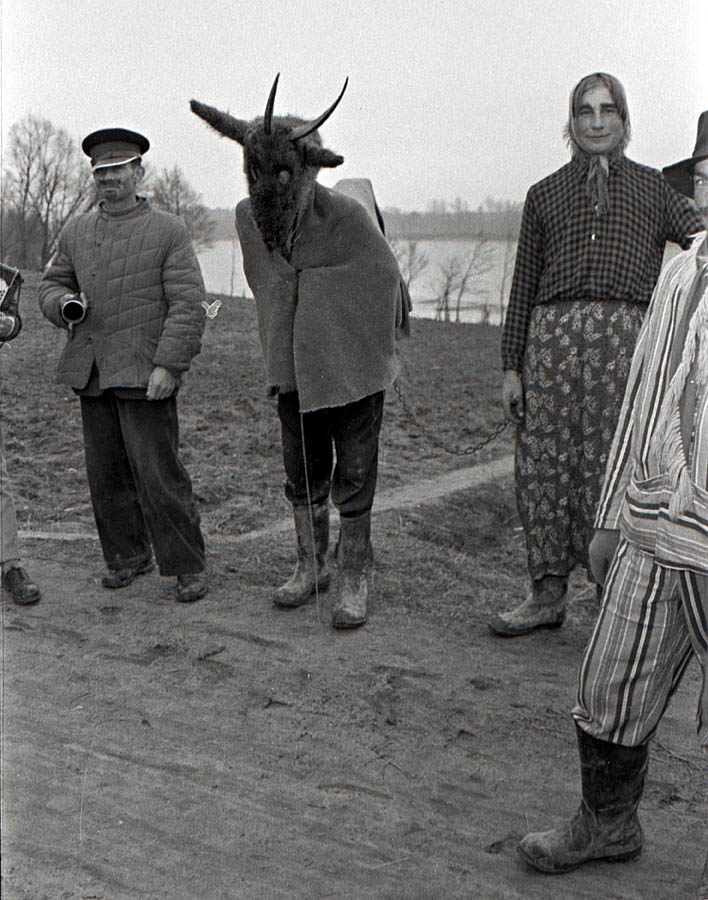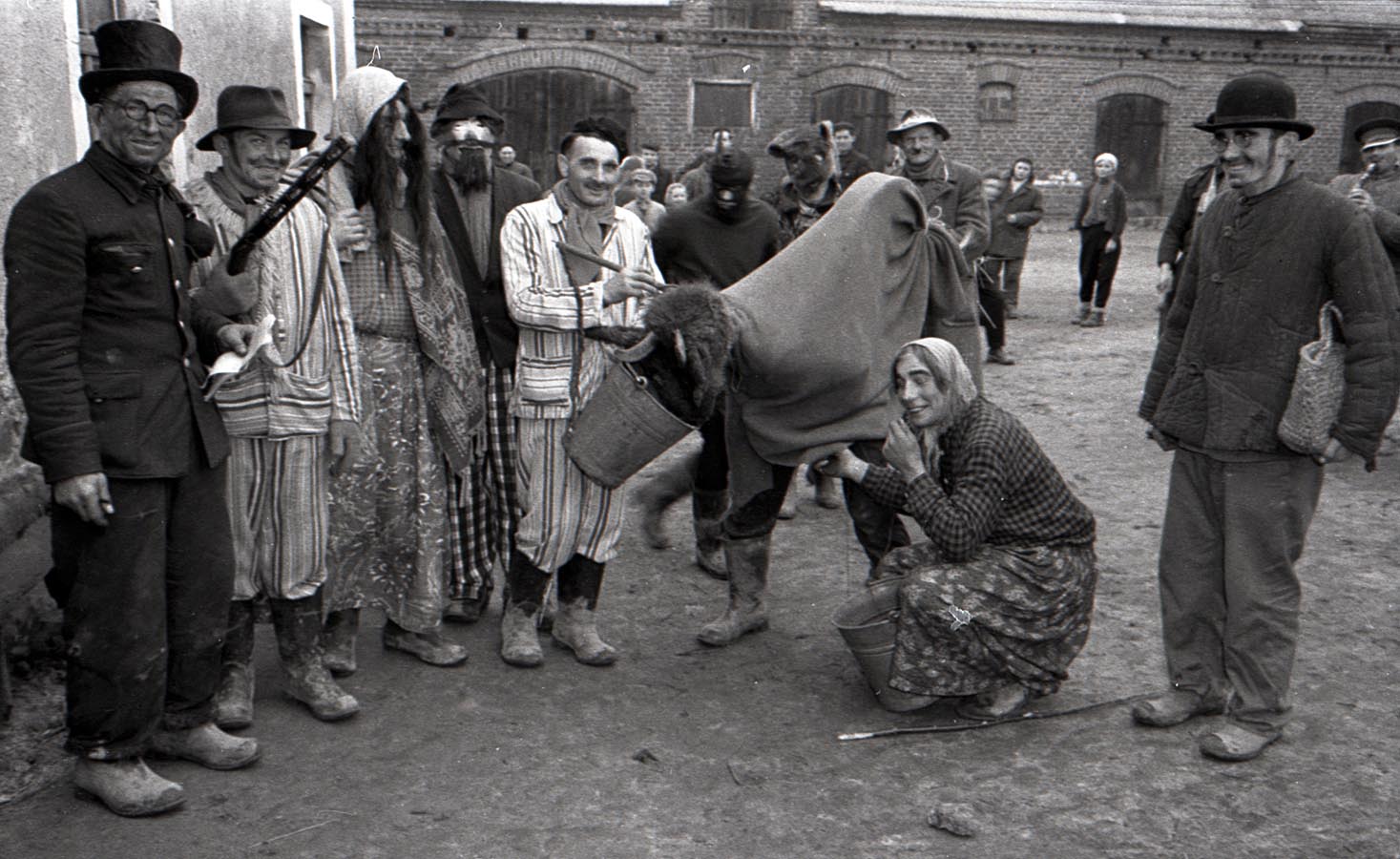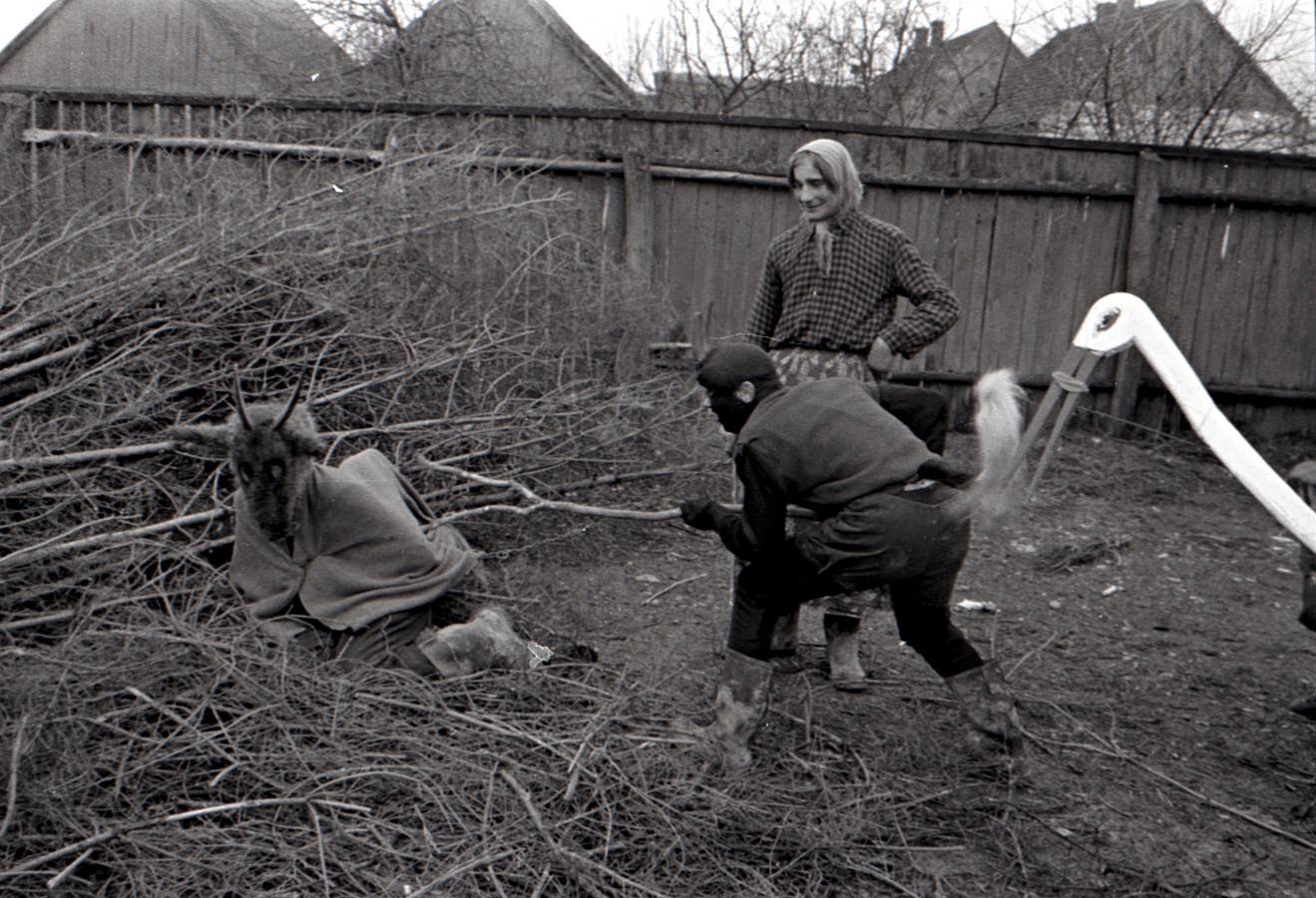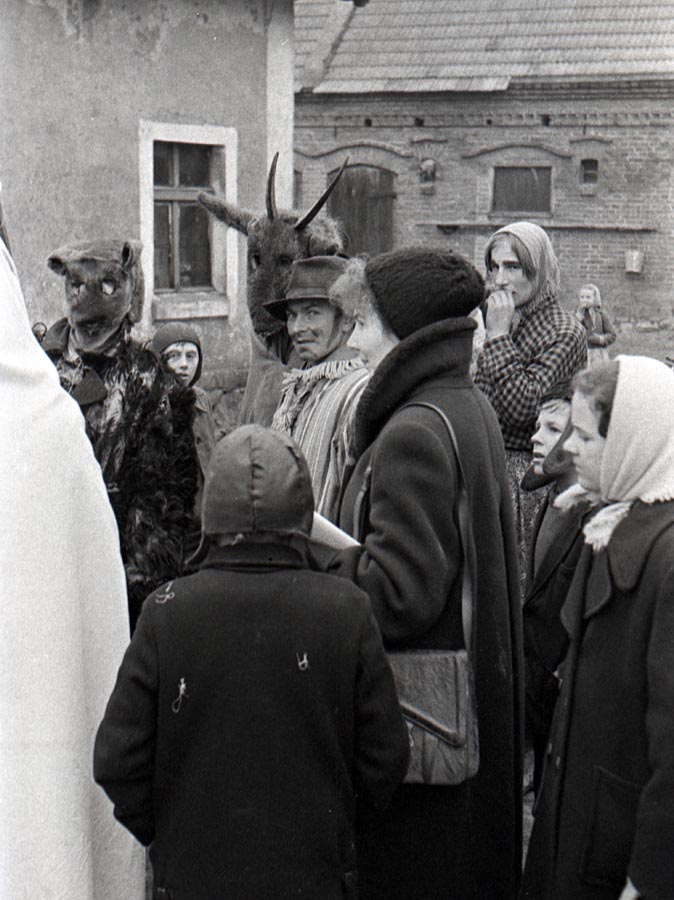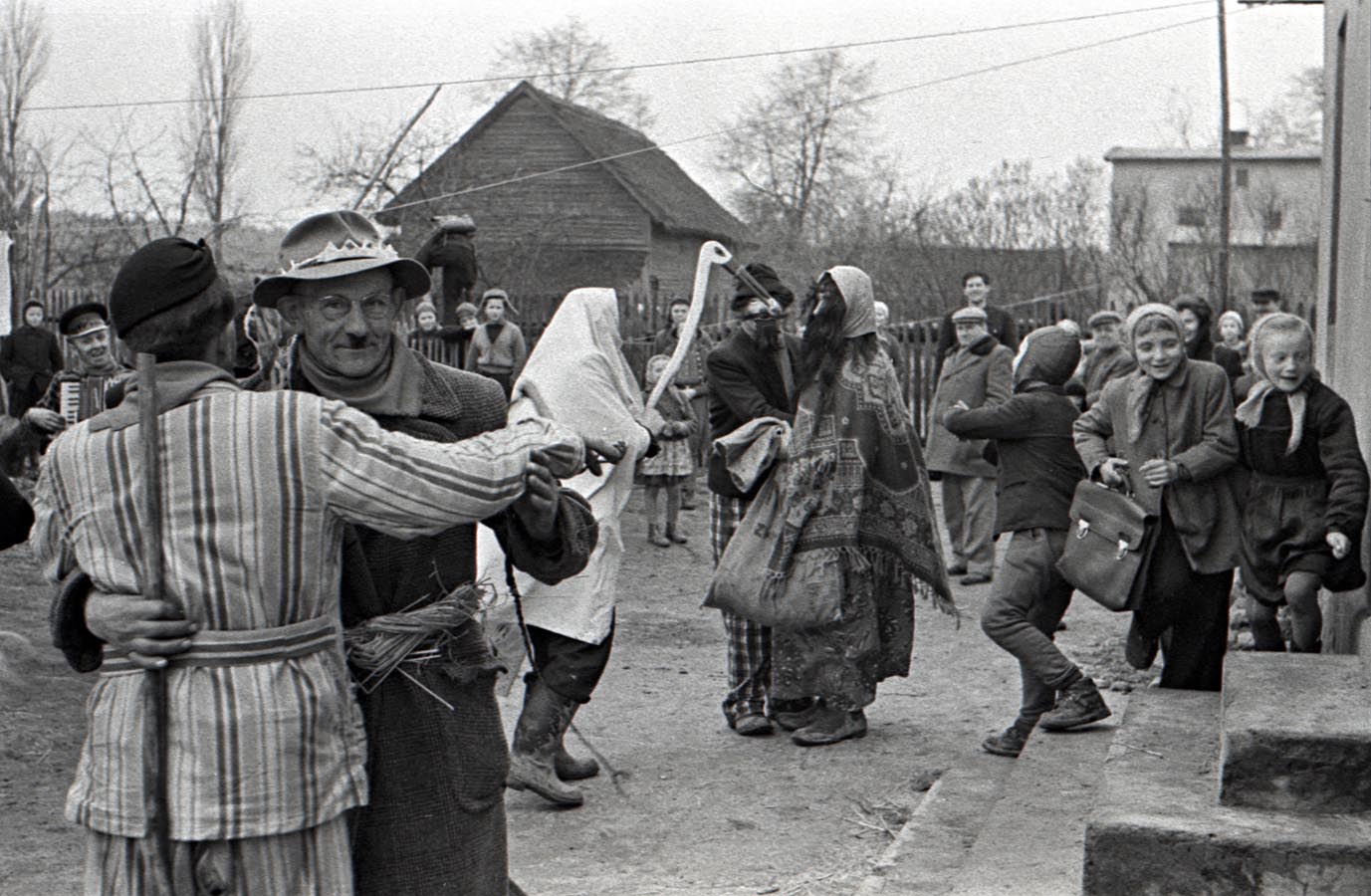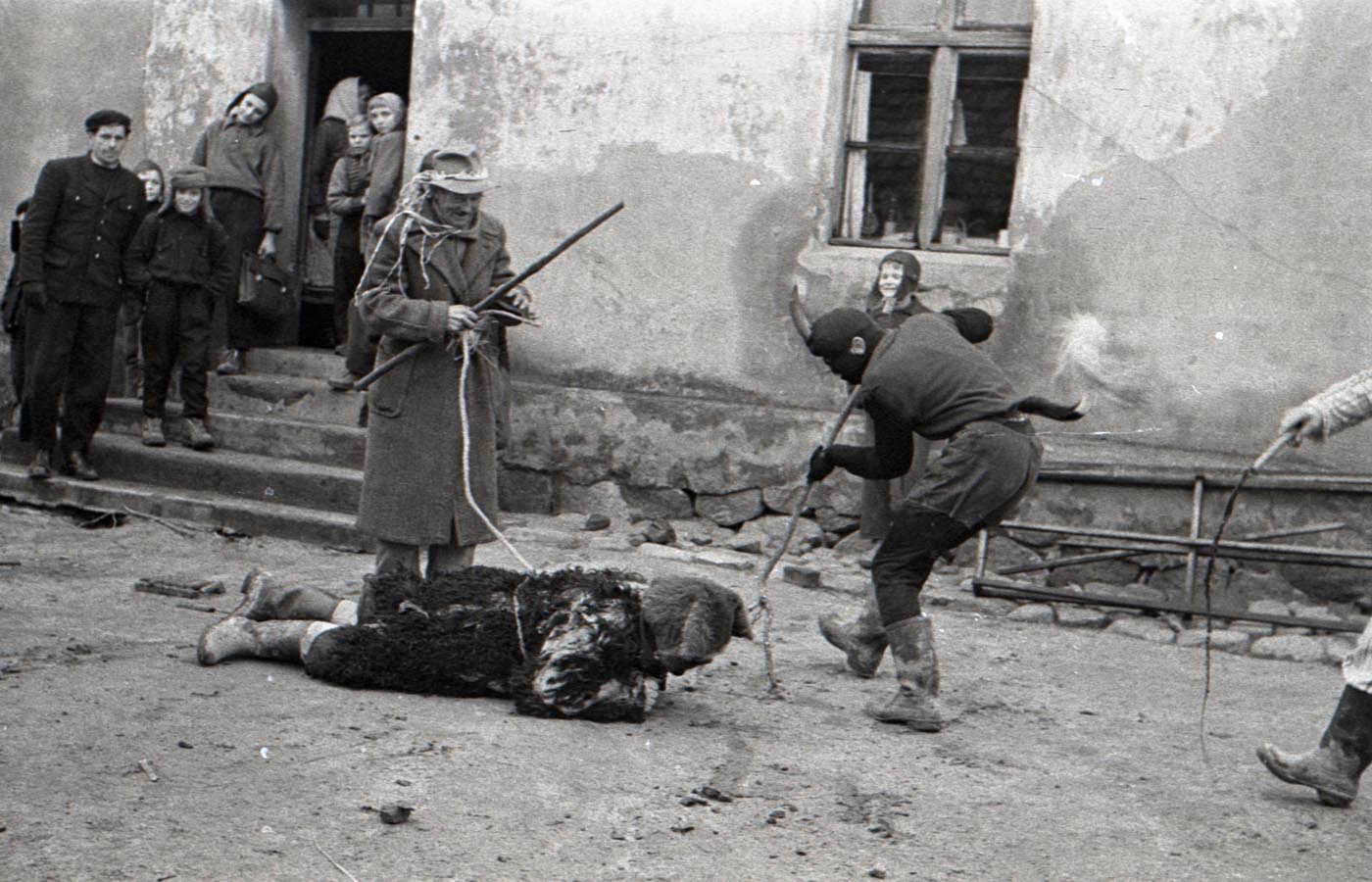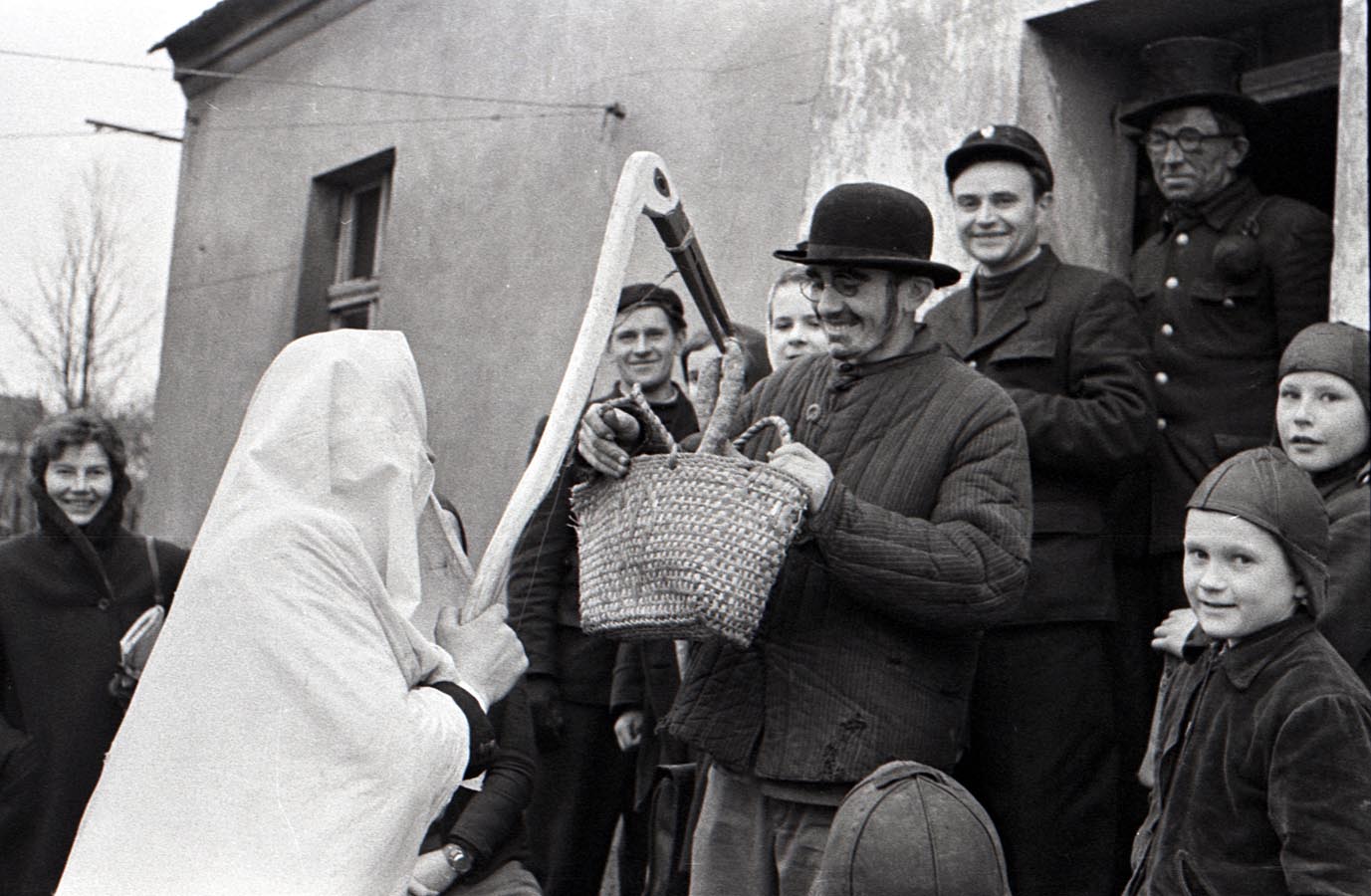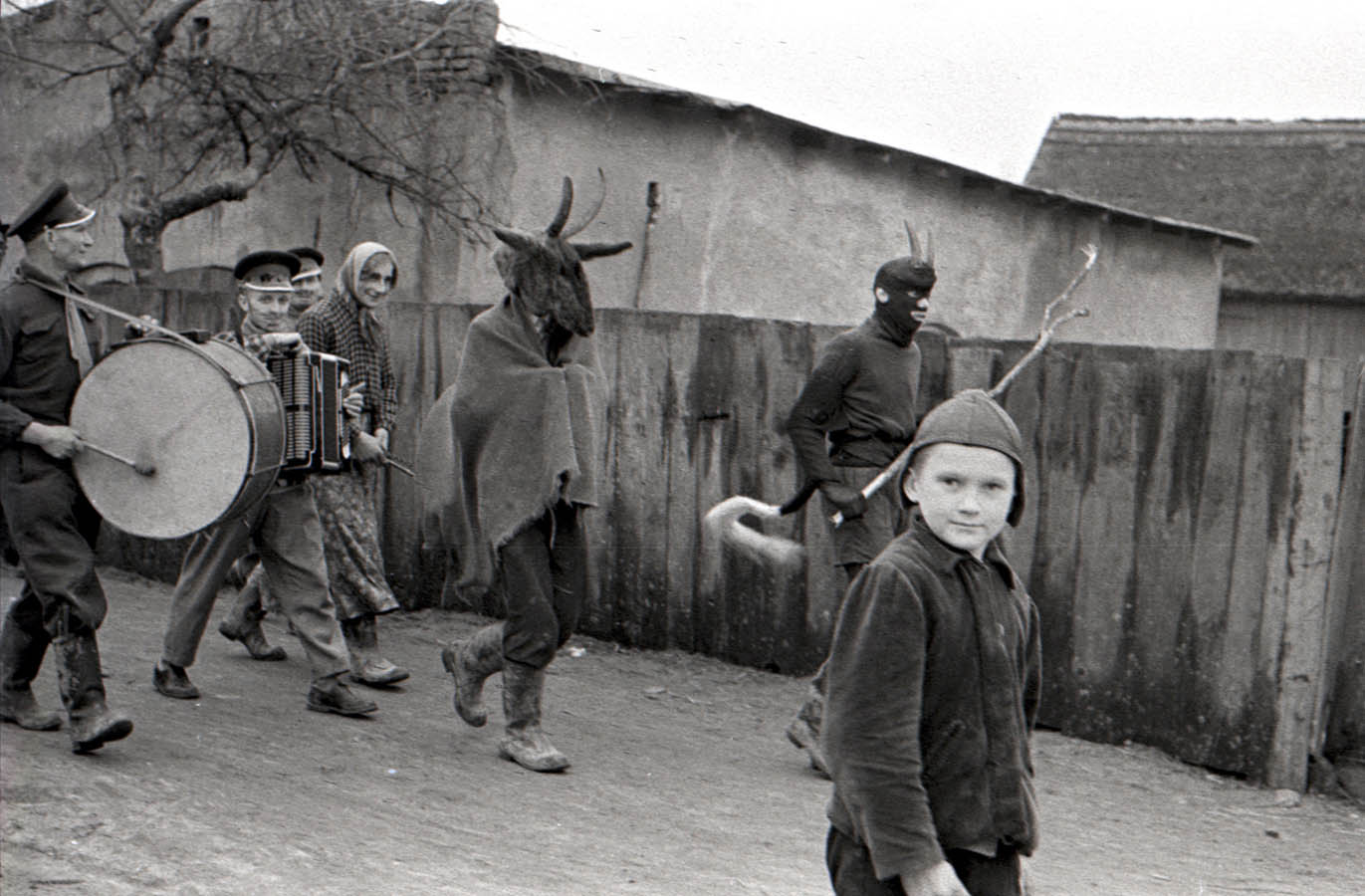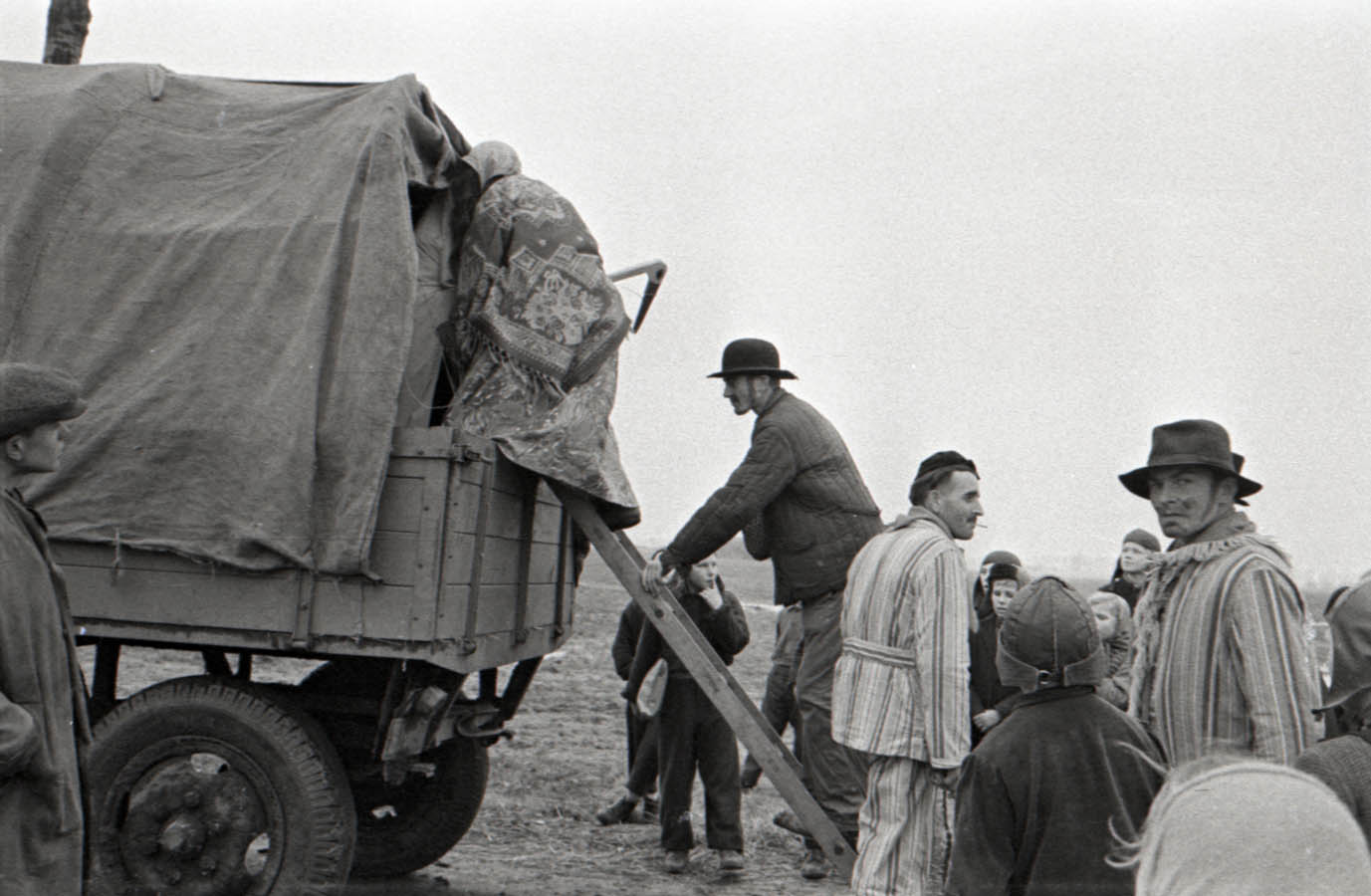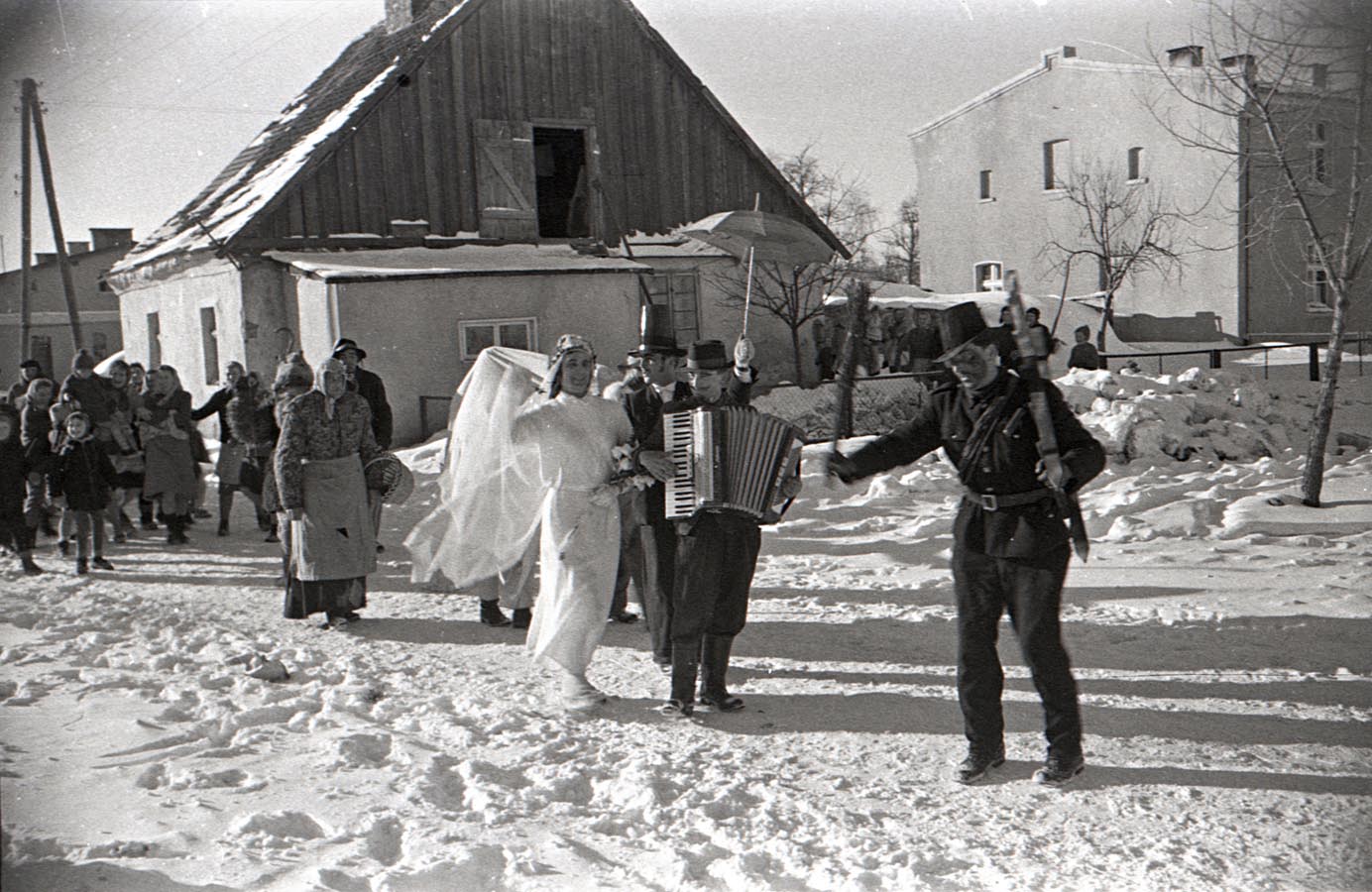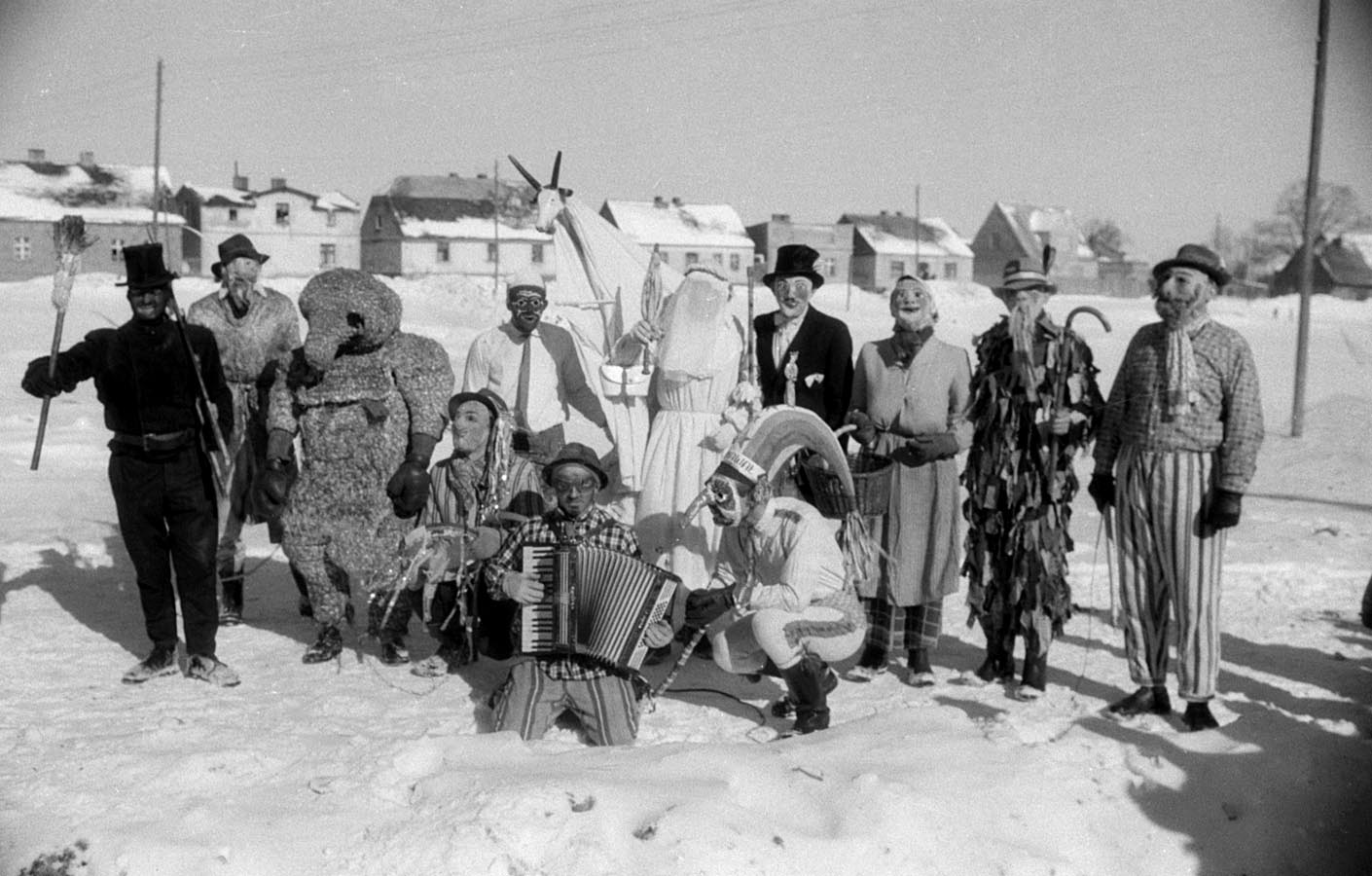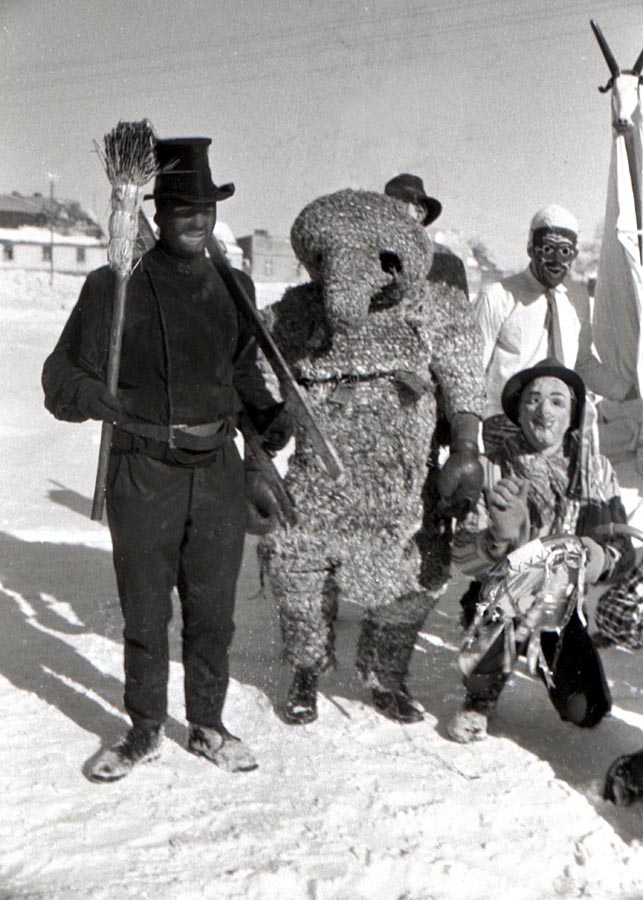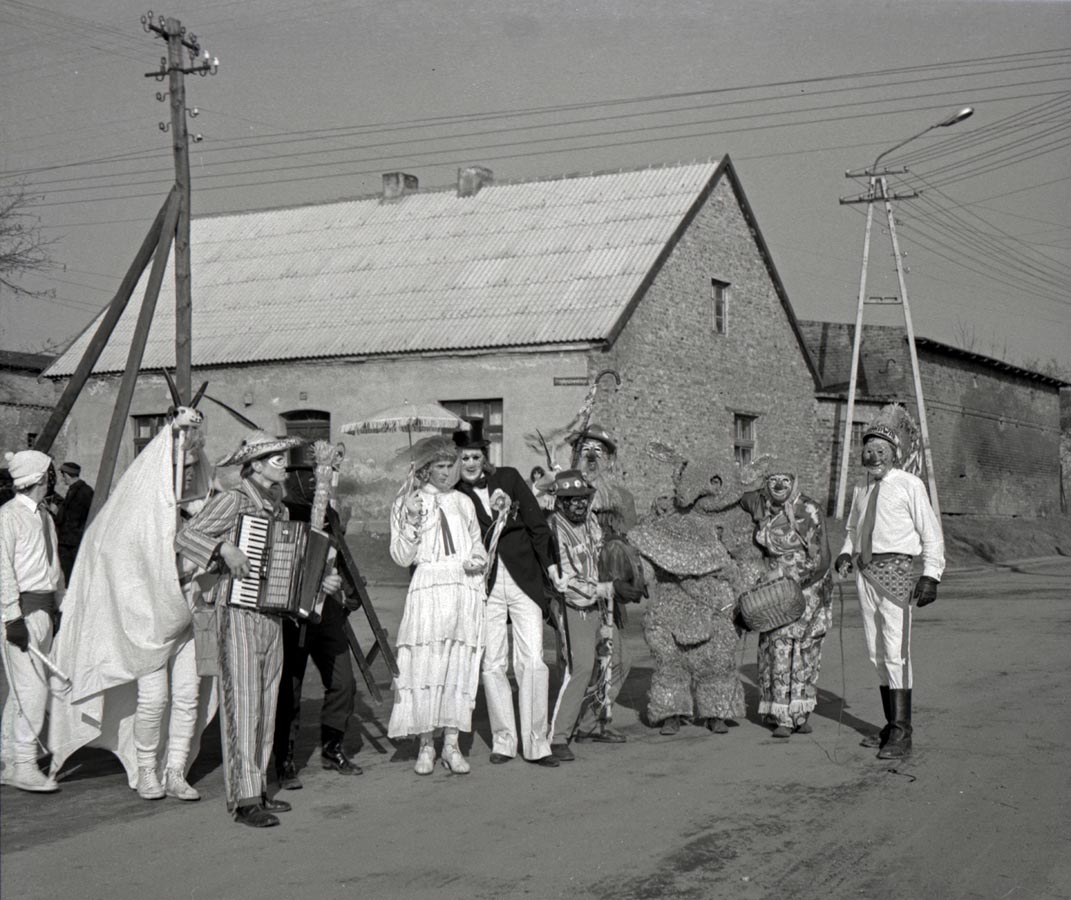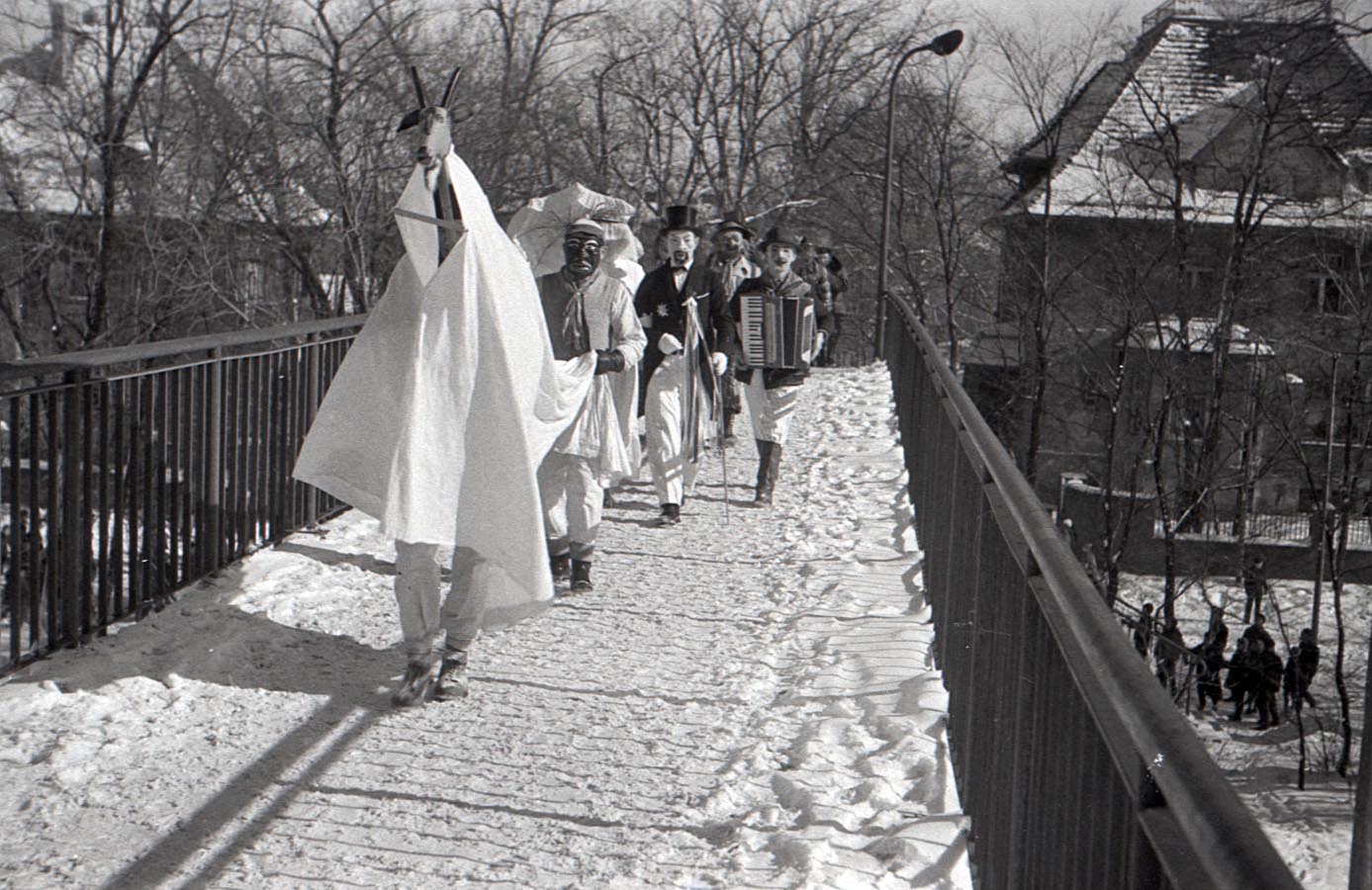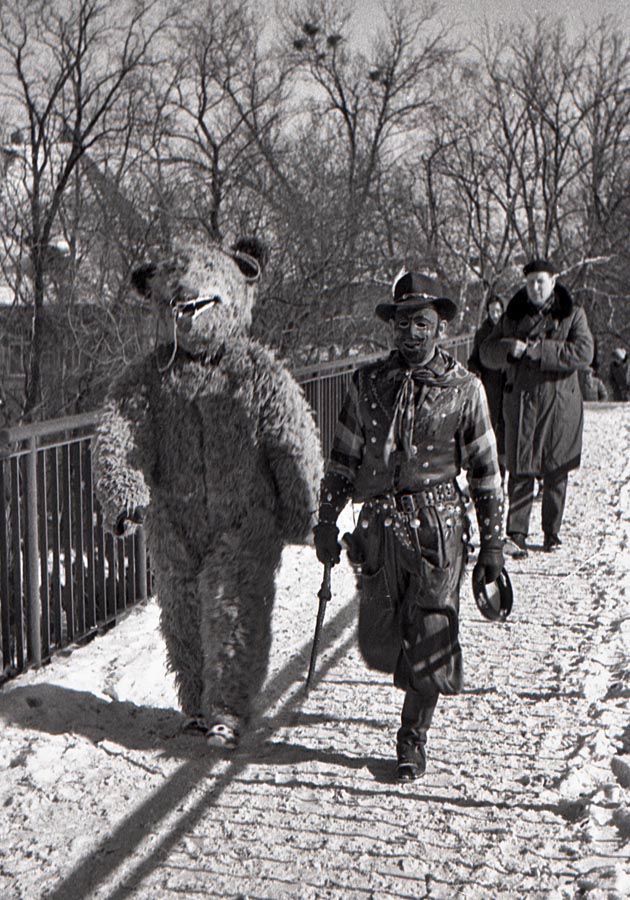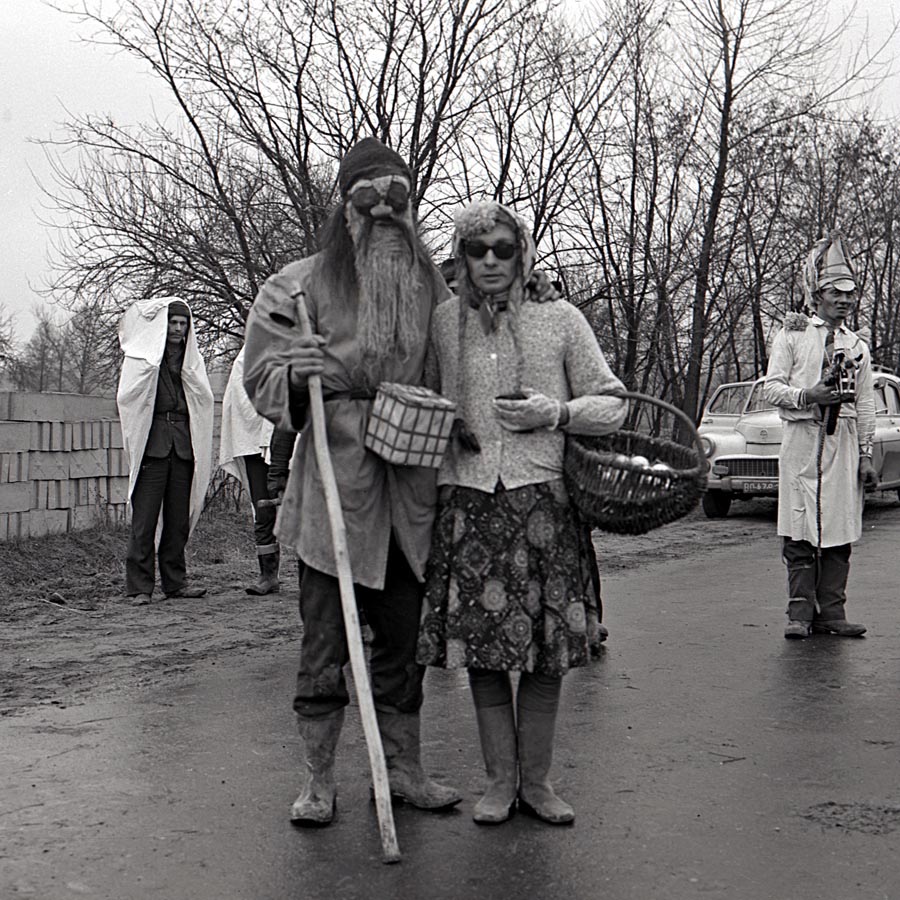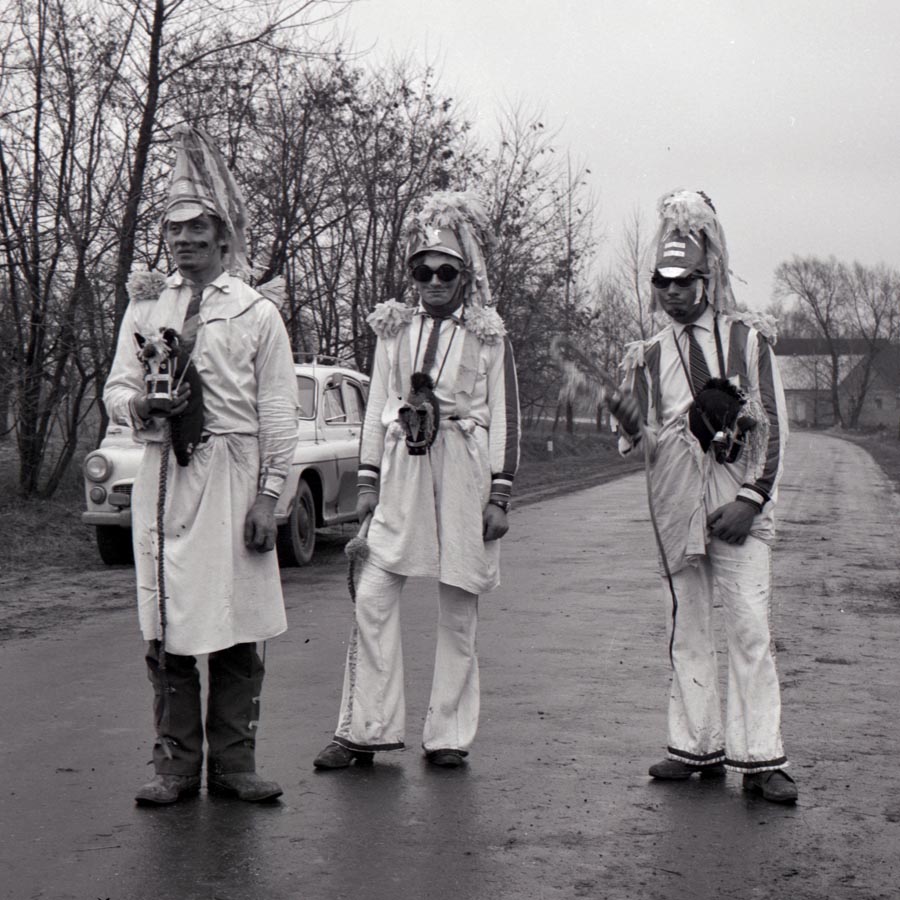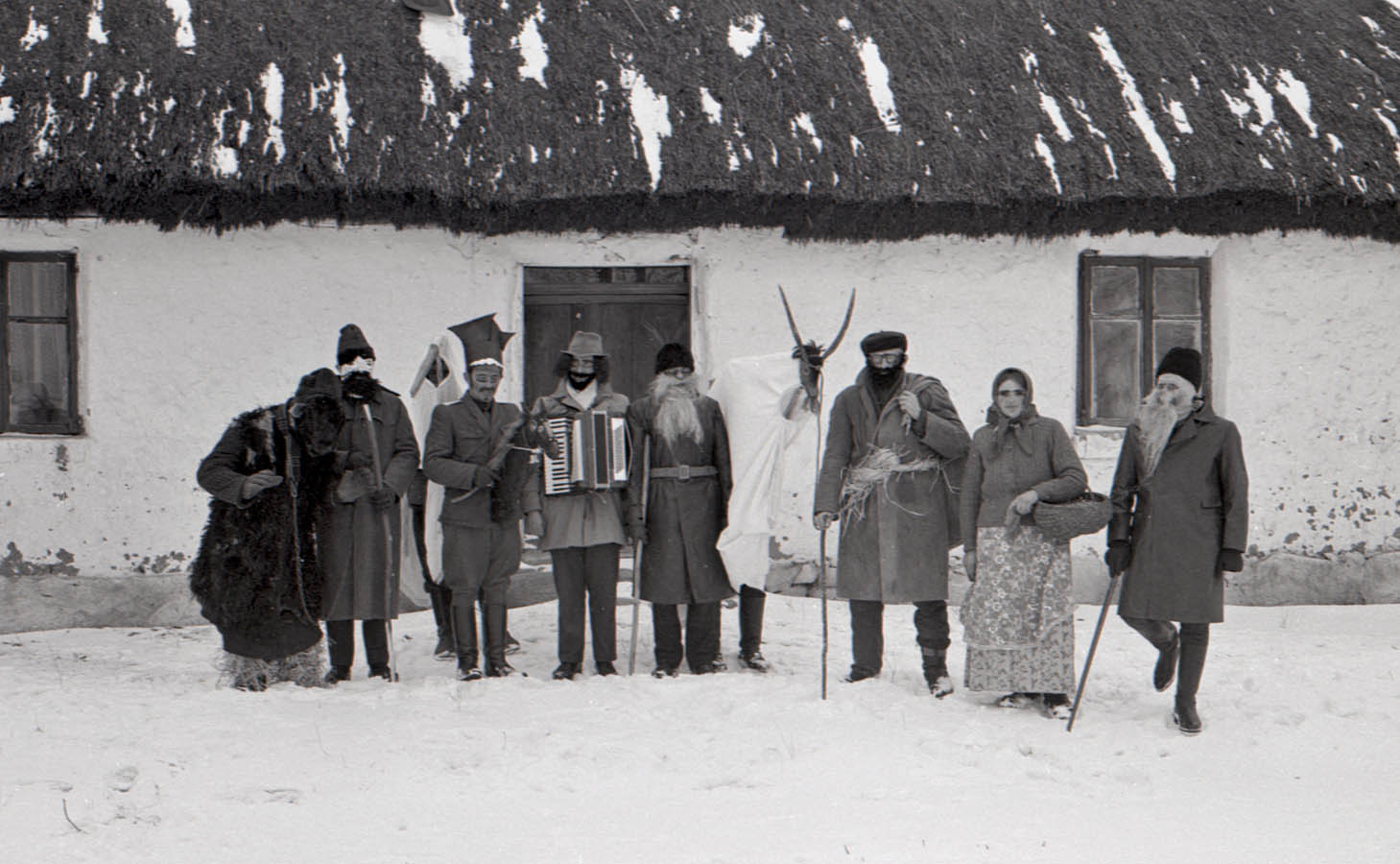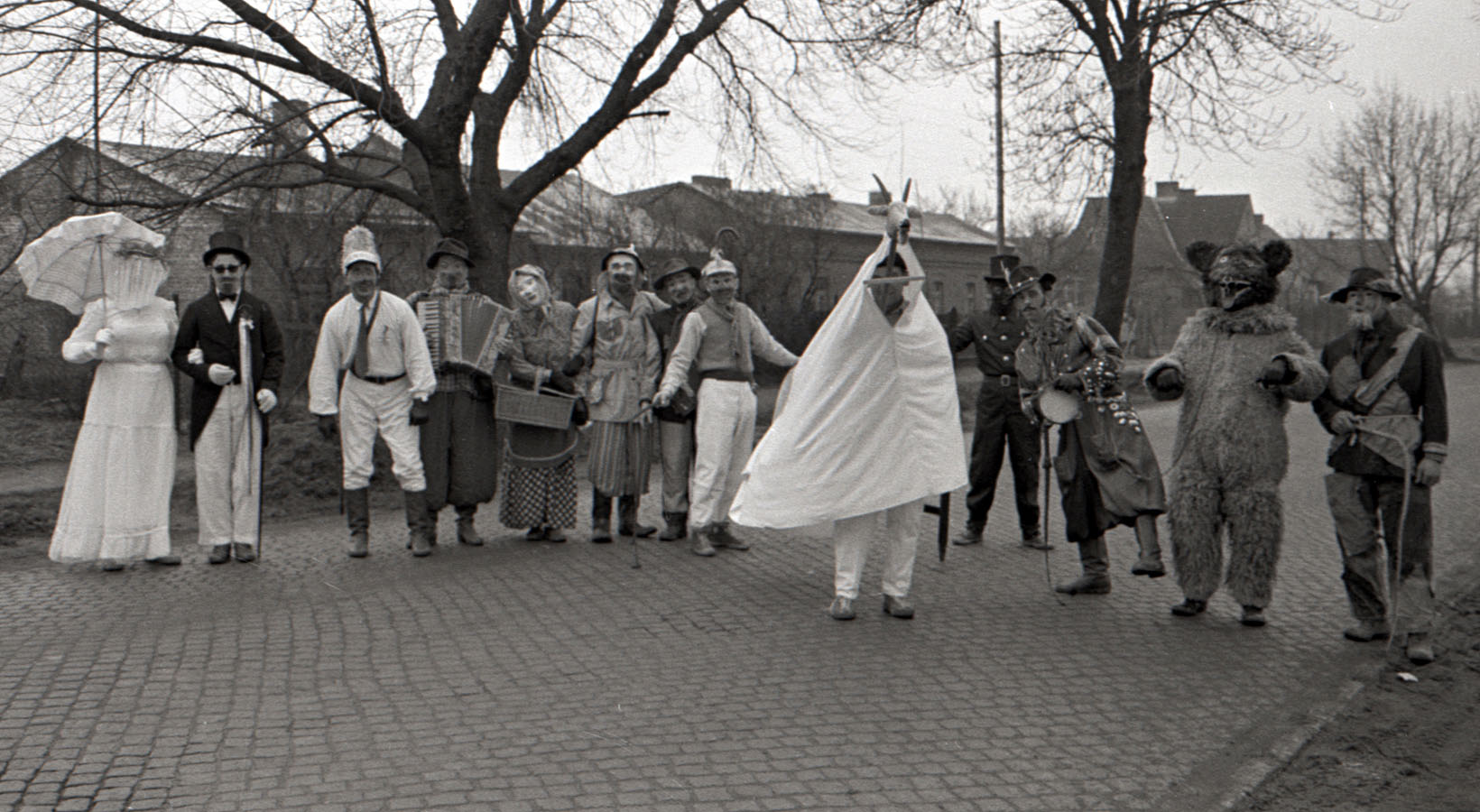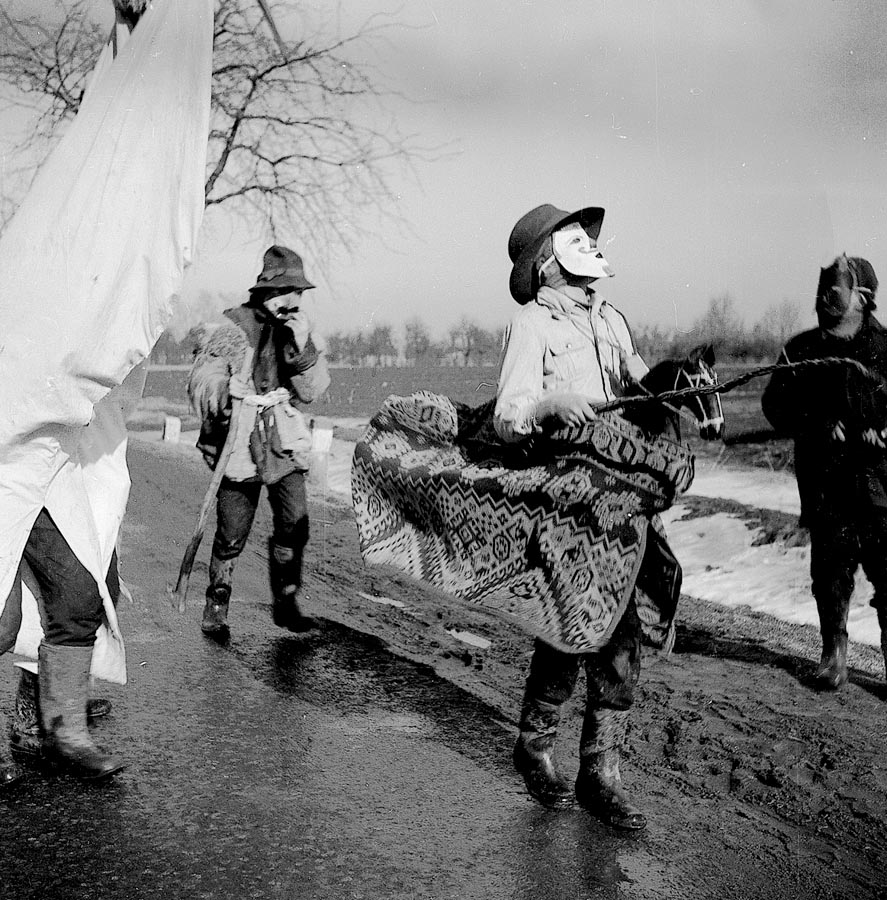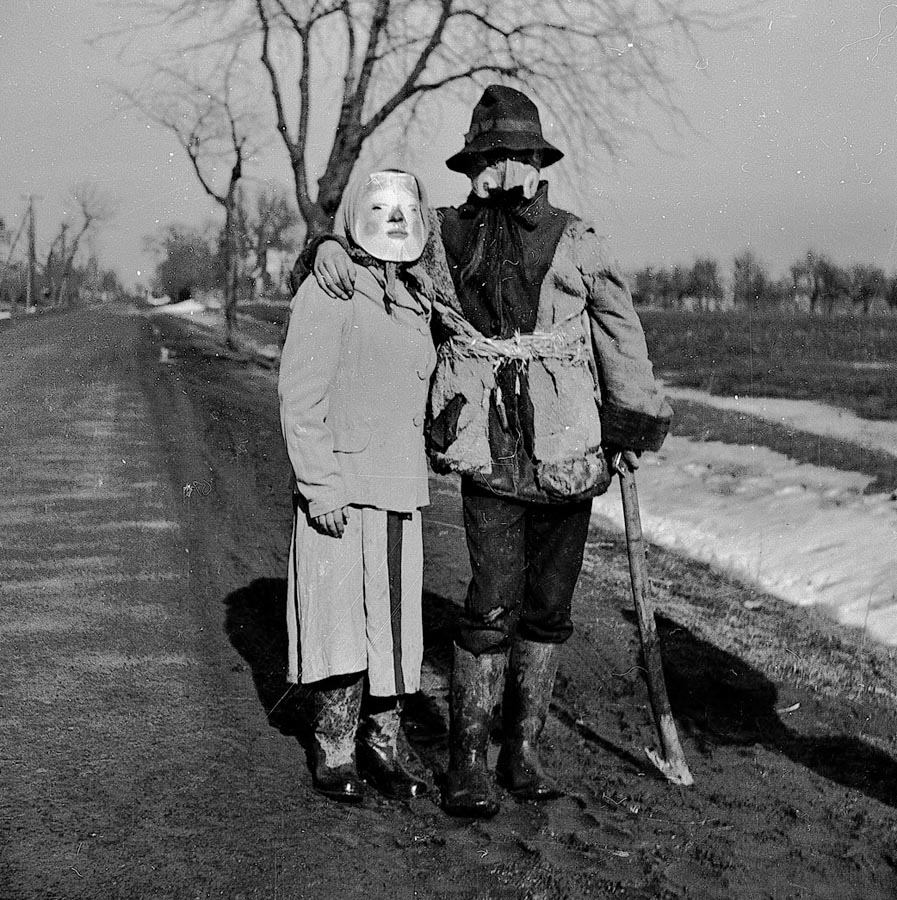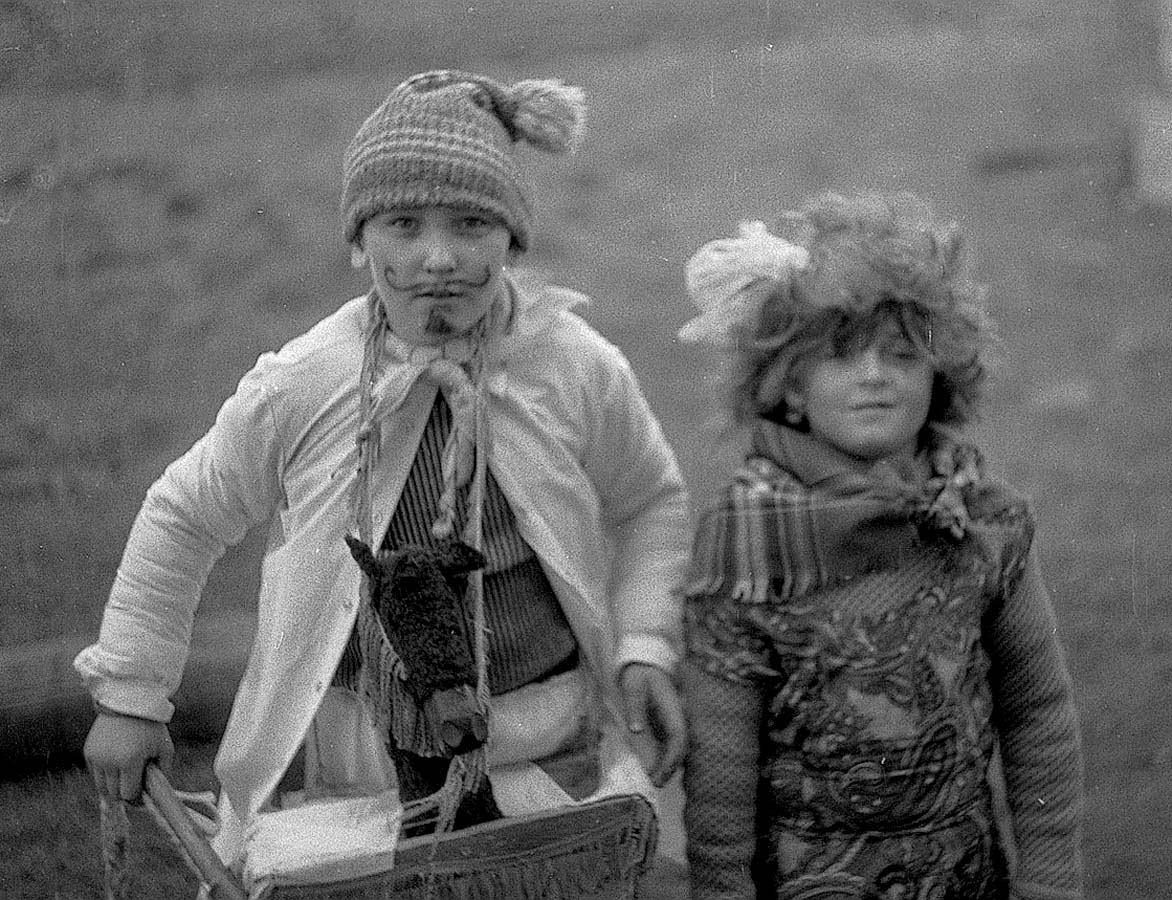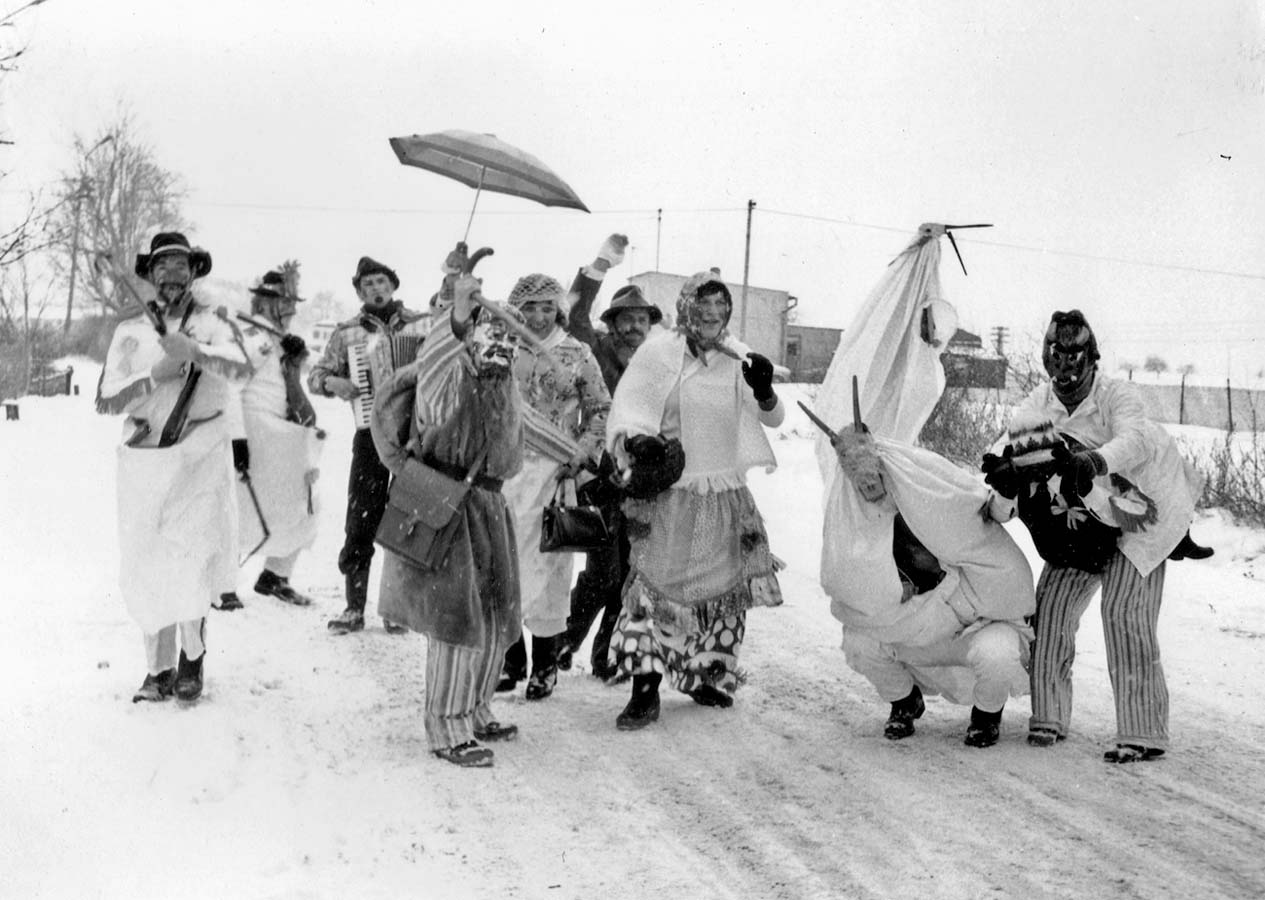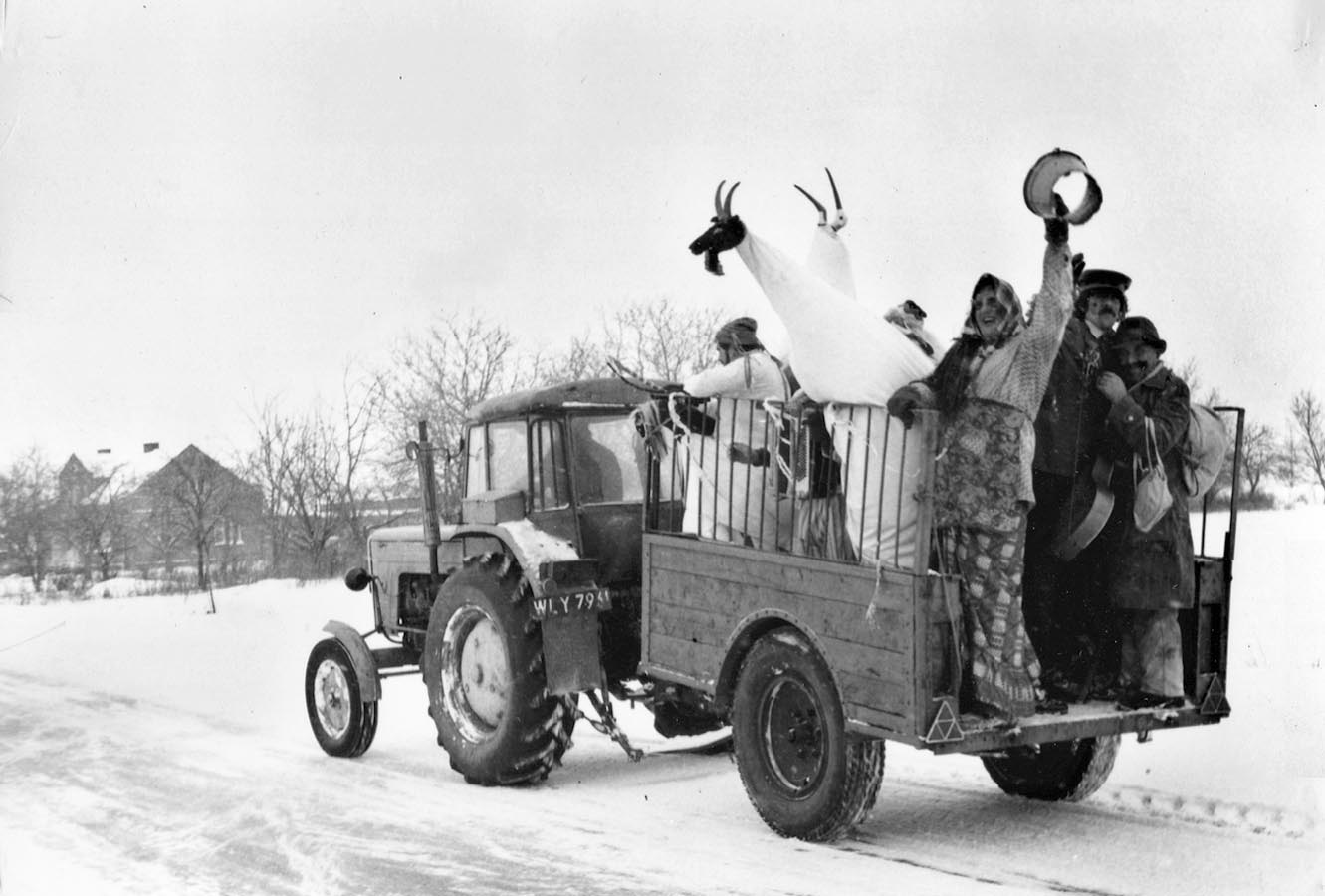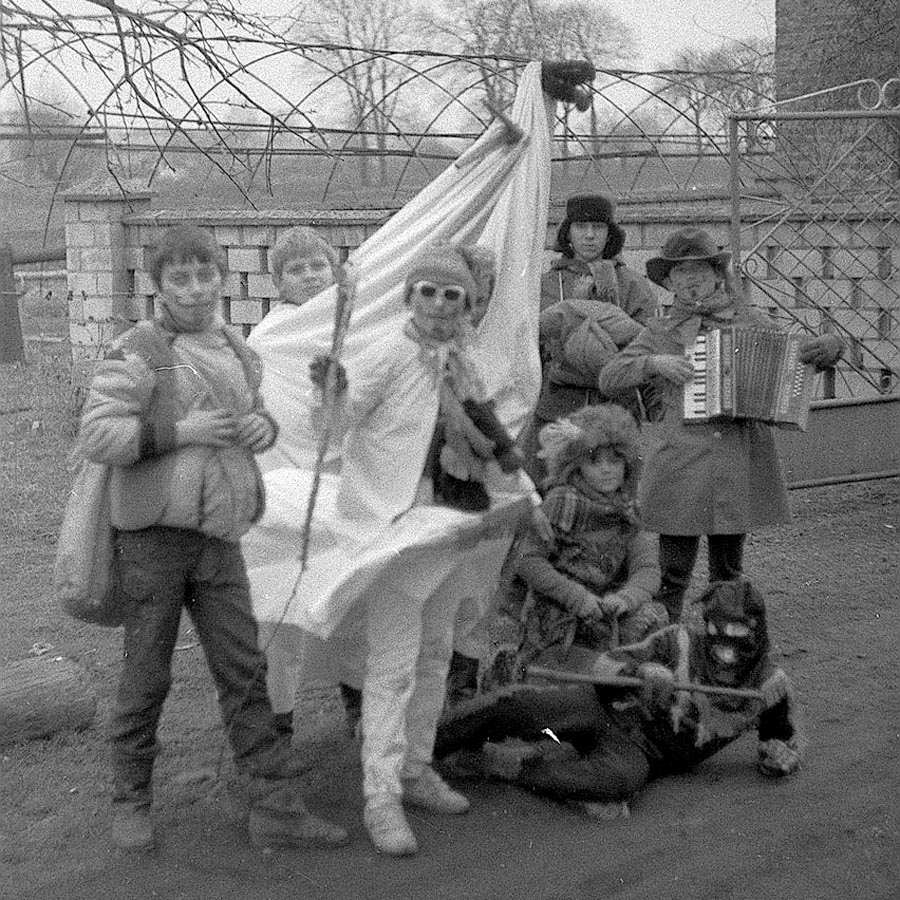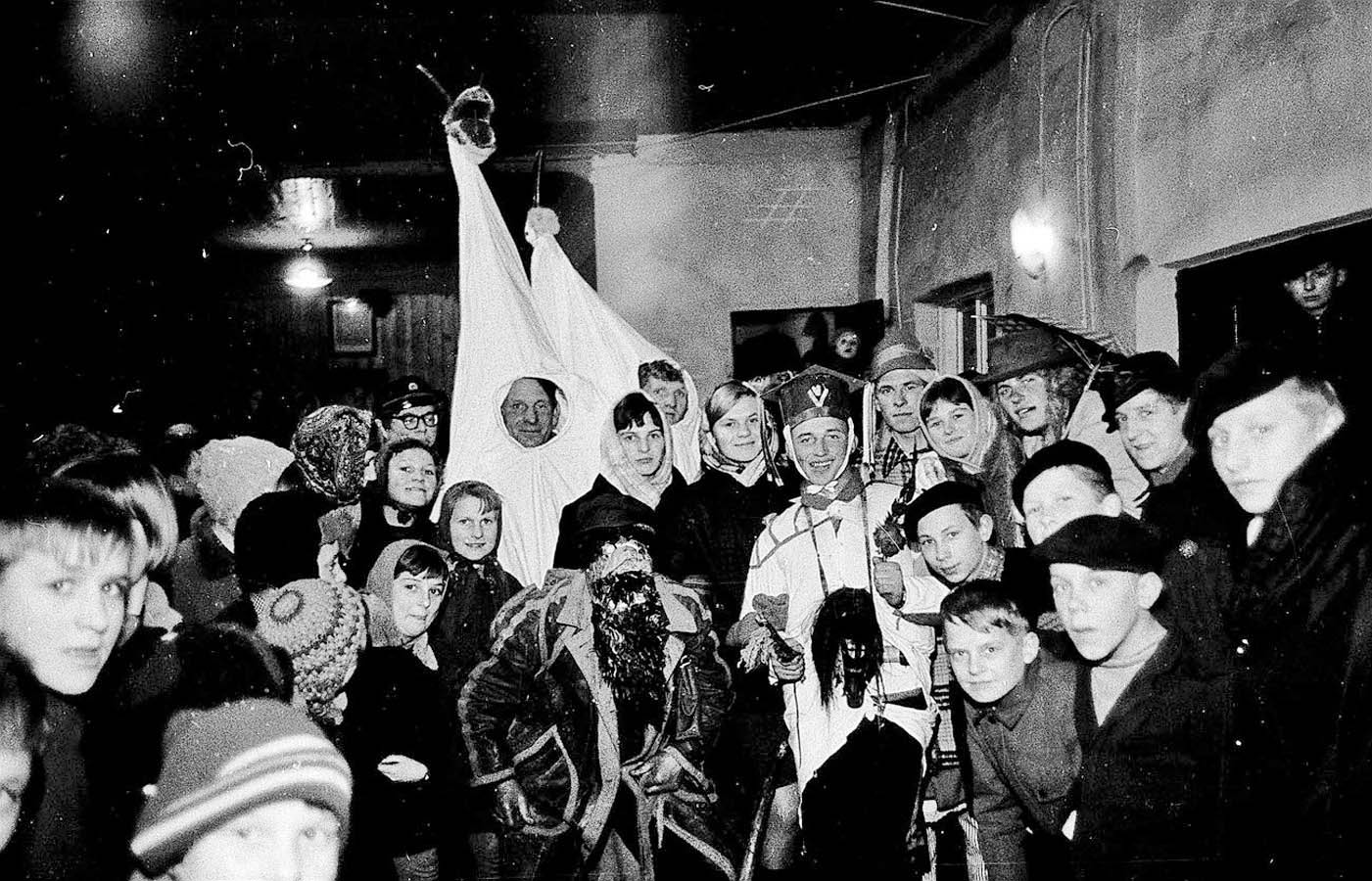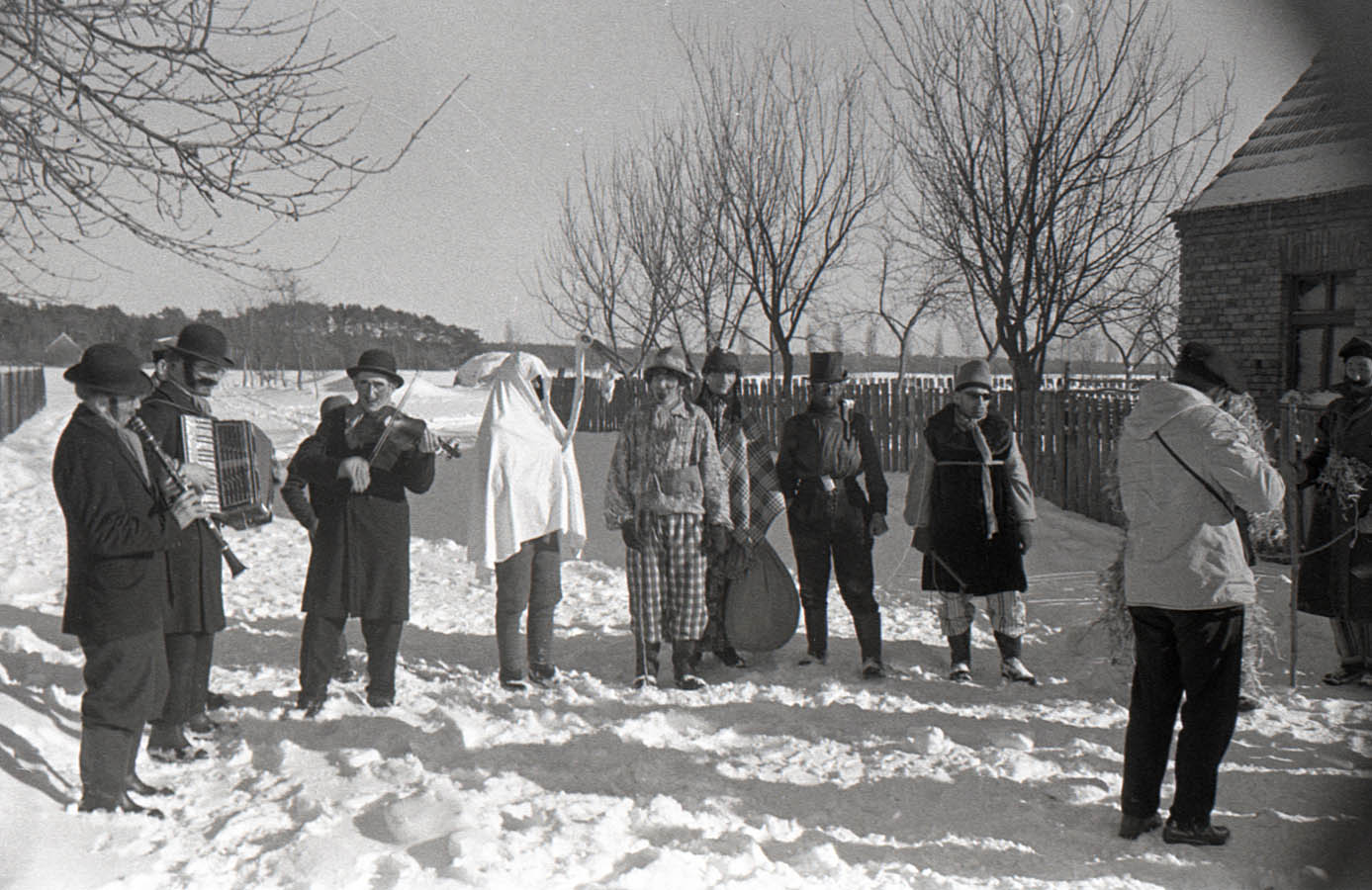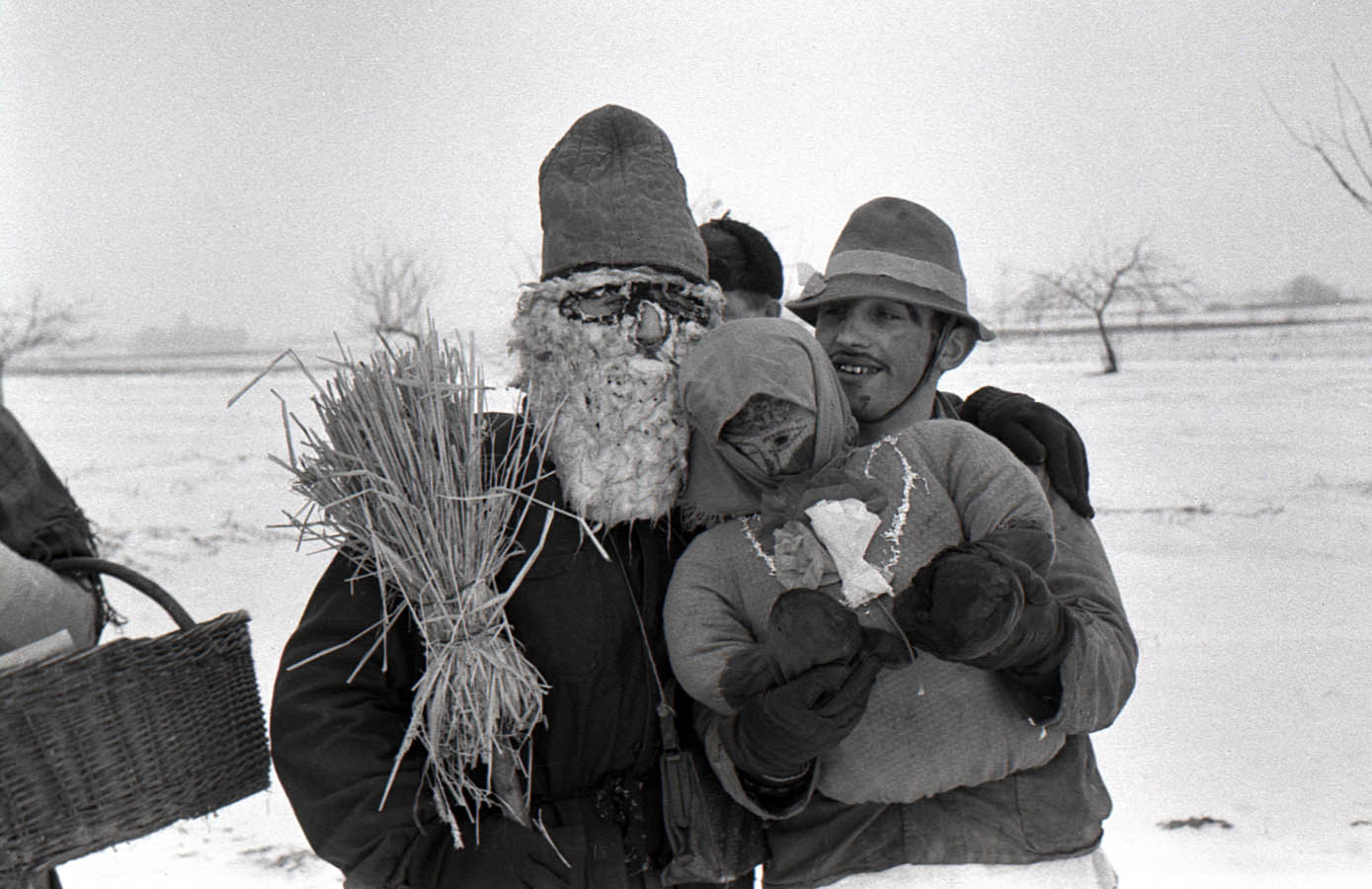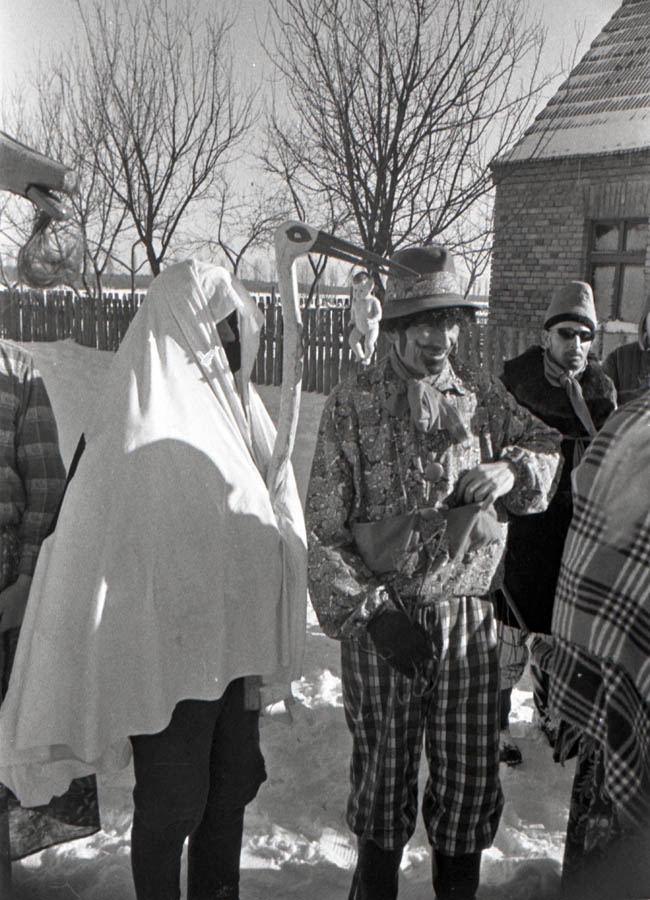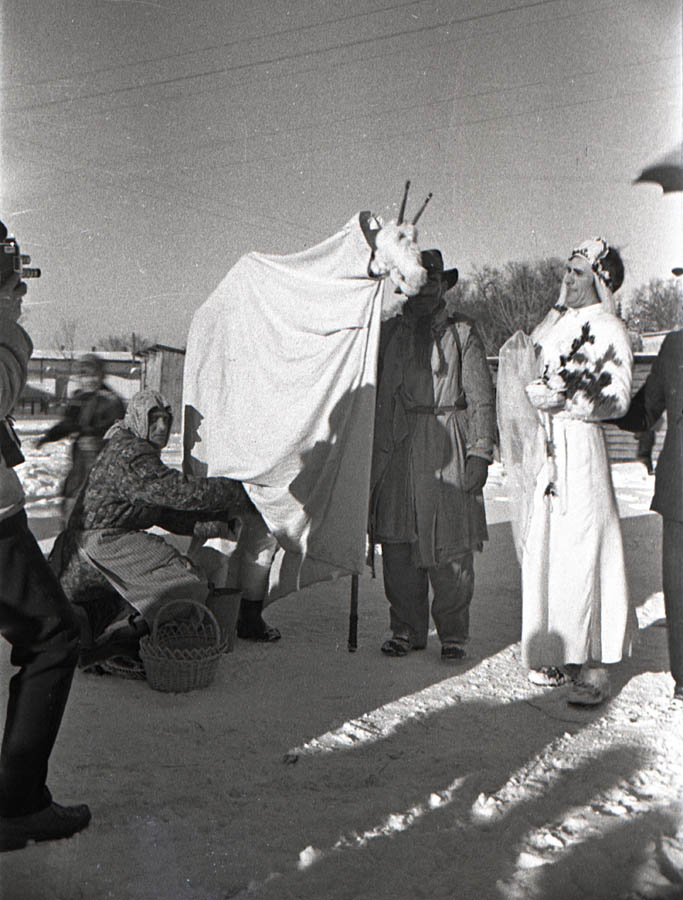Shrovetide (Zapusty) customs – „Walking with a Goat” in Kuyawia Region
HISTORY
‘Walking with a Goat’ is a custom practiced in Kuyavia till this day, previously also in Pałuki and Great Poland, and it is connected to the end of carnival which is Zapusty. This ritual, which is of pre-Christian origin, was connected to vegetation and fertility magic. Similarly to carolling at Christmas time, it originates from pagan holidays from the turn of winter and summer and the Old and New Year. According to the tradition, the participants of this ritual were men who would walk from house to house in costumes with animal mascarons in hands. The mascarons symbolised vegetation powers and had magical functions – their presence was supposed to enliven the nature and bring quick arrival of spring. Formerly, the processions would end with goat celebrations (zabawa podkoziołkowa) at the inn. During the festivities, the girls would buy dances with chosen boys by throwing coins under the goat – a figurine carved out of wood, sugar beet or rutabaga.
The most important animal of the Shrovetide parades has always been a goat. In Kuyavia, it gave a name to the whole group of people in costumes though the parades also included other mascarons, i.e. bear, horse and stork. A goat, as a leading character, was used to act out scenes – it was ‘sold’ to members of the household, ‘treated’ by hitting with a stick or given alcohol when it fell to the ground. The fall of the animal and its ‘death’ symbolised the arrival of winter while its ‘rebirth’ meant nature revival in spring. A goat was also a character of nursery rhymes shouted to bring good harvest: Gdzie koza chodzi, też się żytko rodzi, kędy jej tropy powstają kopy [Where a goat goes…]. The animal mascarons were accompanied by other disguised characters: a soldier, a Jew, a chimney-sweep, a tinker and also a devil and death. Due to the fact that only men were carollers, it was them who impersonated the Bride, the Gypsy woman and an old woman.
The vegetation and fertility sense of the whole ritual was symbolically emphasised by the materials which were used to make the costumes such as straw, fur, haulms. The gestures (stork’s peck, goat’s ‘attack’, dirtying by the chimney-sweep with soot) and sounds (bell noise which was supposed to chase off evil forces and simple melodies played on i.e. harmony) also played an important role. The visits of men in costumes which announced the anticipated arrival of spring was a kind of ‘gift’ for the village inhabitants. According to the conviction functioning in folk culture, for the ritual to have the desired result, it was necessary to pay for the gift with money, food or alcohol.



